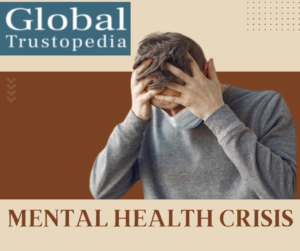Recognising the Mental Health Crisis: Why It Matters and What We Can Do
It’s impossible to ignore: we’re in the middle of a recognising Mental Health Crisis. You see it in the headlines, hear it in conversations, and maybe even feel it in your own life. But what does this “crisis” really mean, and more importantly, what can we do about it? Let’s break it down in a way that feels real and relatable.
What’s Really Going On? The Signs We Can’t Ignore
The term “mental health crisis” isn’t just a dramatic label. Recognising the mental health crisis involves understanding that it reflects a significant increase in mental health conditions like anxiety, depression, and other disorders, especially among young people. We’re also seeing a surge in substance abuse and, tragically, suicide rates. This isn’t about a fleeting moment; it’s a sustained trend that demands our attention.

Why Now? Untangling the Roots of the Mental Health Crisis
There’s no single cause, but several factors are likely contributing:
- Increased Awareness, Decreased Stigma: On one hand, it’s good that we’re talking more openly about mental health. This encourages people to seek help, which might explain some of the increased numbers.
- Social Media and Technology: The constant comparison, the pressure to present a perfect image, and the addictive nature of social media can take a toll on mental well-being.
- Social Isolation: The rise of remote work and increasingly digital lives have led to a sense of isolation and disconnection for many.
- Economic Pressures: Financial insecurity, job stress, and the rising cost of living can significantly impact mental health.
- World Events: Global events like pandemics, political unrest, and climate change can create a sense of uncertainty and anxiety.
The Impact: Who’s Affected?
The mental health crisis doesn’t discriminate. It affects people of all ages, backgrounds, and socioeconomic statuses. However, some groups are particularly vulnerable:
- Young Adults and Teens: This demographic is experiencing some of the highest rates of anxiety and depression.
- Marginalized Communities: Systemic inequities and discrimination can exacerbate mental health challenges for racial and ethnic minorities, LGBTQ+ individuals, and other marginalized groups.
- Essential Workers: Healthcare professionals, teachers, and other essential workers have faced immense stress and burnout during the pandemic.
What Can We Do? Finding Solutions Together
The good news is that we’re not powerless. Here are some actionable steps we can take:
- Seek Professional Help: If you’re struggling, don’t hesitate to reach out to a therapist, counselor, or psychiatrist. Teletherapy options have made mental healthcare more accessible than ever.
- Build a Support System: Connect with friends, family, or support groups. Talking about your feelings can make a huge difference.
- Practice Self-Care: Prioritize activities that bring you joy and help you relax, such as exercise, meditation, or spending time in nature.
- Advocate for Change: Support policies that expand access to mental healthcare, reduce stigma, and address the root causes of the crisis.
- Be a Friend: Sometimes, just listening and offering a supportive ear can make a world of difference to someone who’s struggling.
The mental health crisis is a complex issue, but by understanding the causes, addressing the stigma, and taking action, we can create a more mentally healthy future for ourselves and our communities. Recognising the mental health crisis is the first step. It starts with a conversation, a helping hand, and a commitment to prioritising well-being.
